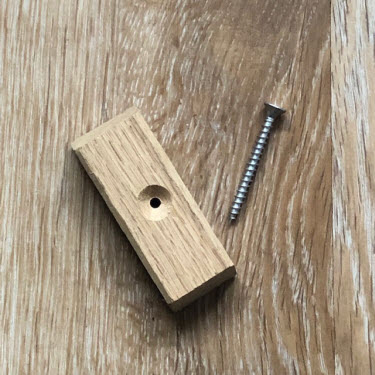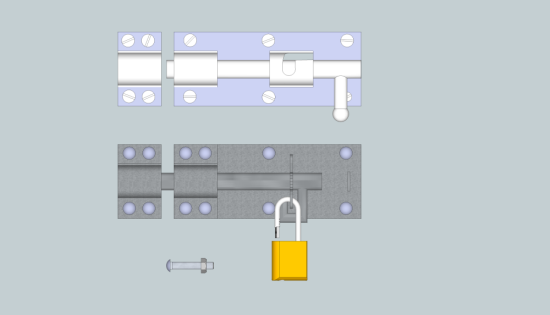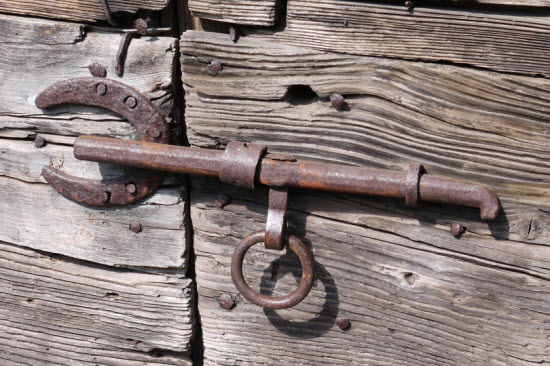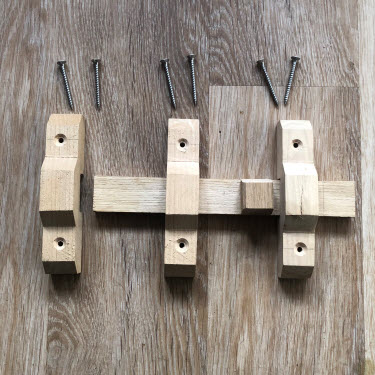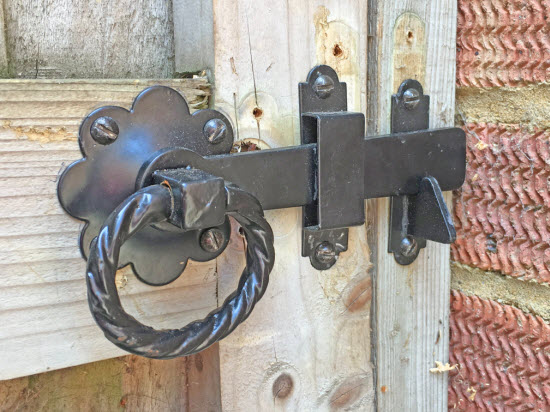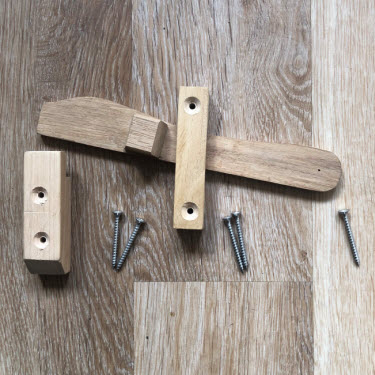Four shed door latch types to keep your shed door shut (and a bonus 3 to keep it open!)
Shed door latches differ from locks in that they are primarily designed to keep a door closed, not secure it against potential intruders (that is the job of the door lock).
For many sheds a simple shed latch is all that is needed to stop the door from flapping in the wind while you are working in the garden. The door is locked at the end of the day when you have finished your work in the garden.
There are four main types of shed door latch that I am going to describe
Most of them can be made from metal or wood, in fact many of them can be made fairly simply yourself. The descriptions below start with the simplest and work up towards the more complex, though even these are not too tricky.
Shed door turn button
The simplest type of shed door latch is the turn button. These are simply a small wooden bar that is screwed through the siding into the frame of the shed. The size of the bar varies, the smallest are made out of cast metal while if you are making your own shed turnbutton they will be a little larger.
I would recommend making them out of a hardwood such as oak. Using a scrap of leftover softwood such as came on one shed I bought just wont be very durable.
Sliding latch
The sliding latch or bolt is the next shed latch in the scale of complexity. Metal shed door bolts come in a variety of sizes and finishes. If they are going to be on the outside of the shed I would always recommend a galvanised finish rather than painted (which will quickly rust). The use of these bolts as a latch is not too exciting. If you look on the usual ecommerce sites you will find a range of standard hardware.
 Sliding metal shed door latch, this one is lockable
Sliding metal shed door latch, this one is lockable
Your local gate and fencing supplier will have a range of hardware too. I have noted that with the advent of ecommerce that local shops are stocking better quality components and the ecommerce shops a range, including much 'cheap tat' that wont last long. So going to your local bricks and mortar store is a good option.
One brand that seems to be supplying a quality range of hardware is Gatemate. They are available both online and in bricks + mortar stores.
 Old handcrafted sliding metal shed door latch
Old handcrafted sliding metal shed door latch
If metal isn't your thing and you are after a more creative sliding door latch then these wooden door bolts might be up your street. They comprise a bolt with three staples and stainless steel screws for fixing. The bolt is threaded and fairly unique. I made a few of them when I was writing this article and so if you are interested they are available for £16.50 each. They are supplied sanded and ready to apply whatever finish would suit your door.
Rising latch
Next on the complexity scale is the lifting latch. This is commonly seen on gates and comprises three parts. The latch-bar, a staple and a catch. The latch-bar pivots about a screw at one end and is held in line by the staple which sets limits on the amount the latch-bar can rise and fall. Then there is a ramped catch which means that as the door closes the latch is lifted up and as the door is fully closed it drops into position.
 Nice looking rising shed door latch made of steel
Nice looking rising shed door latch made of steel
Once again there are a range of metal latches on offer. But you know what? My oak latches are a thing of beauty.
There are a couple of simple methods of securing this type of latch from unwittingly being released. The first is to use a wedge and the other a pin. These both act to further restrict the latch from lifting and releasing from the keep.
Suffolk latch
The final step in shed door latch development is the Suffolk Latch. This is perhaps the pinnacle of latch development before latches and locks merged to become one item of hardware. The Suffolk latch originated during the 16th Century, in the English county of Suffolk.
The innovation here is that the latch can be lifted from either side using a built in lever pressed by your thumb, rather than the 'fiddle' of sticking your finger through a hole in the door as I described for the rising latch. This makes the Suffolk door latch a proper door retaining device, only to be improved on by the Norfolk door latch. Reputedly developed in the adjoining county of Norfolk, this had the added sophistication of a back plate to the handle.
I'm not even going to bother describing the metal ones except that Gatemate make some nice ones. But wood is good and more beautiful.
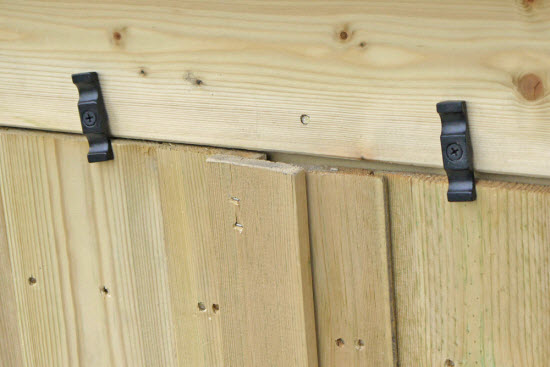 Shed turn buttons made out of metal
Shed turn buttons made out of metal
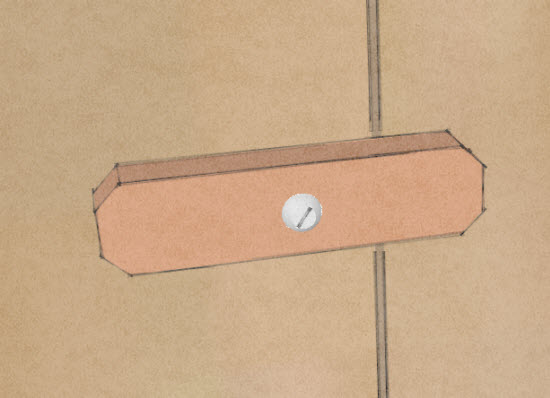 Shed turn button made out of wood
Shed turn button made out of wood
|
Oak - Shed door Turnbutton £3.00
|
shed-d
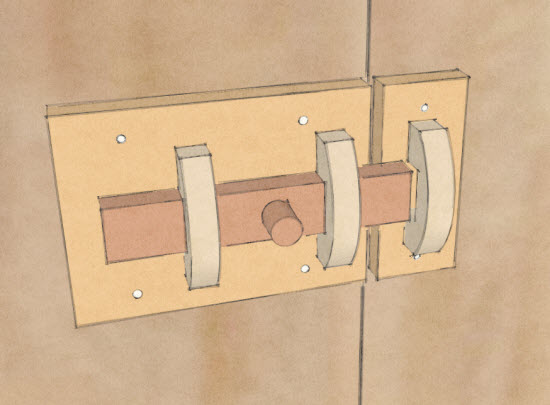 Wooden sliding shed door latch
Wooden sliding shed door latch
|
Oak - Sliding shed door latch £17.50
|
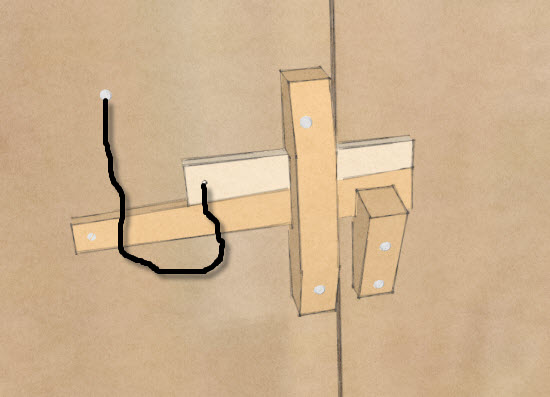 Wooden rising shed door latch, with wedge to secure
Wooden rising shed door latch, with wedge to secure
|
Oak - Lifting shed door latch £17.50
|
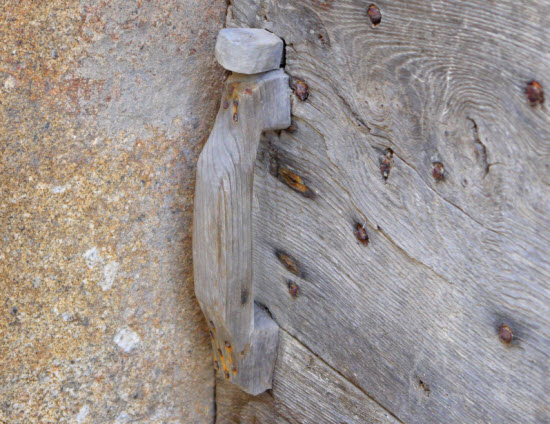 Suffolk type door latch with lever to be depressed by your thumb to lift the latch bar
Suffolk type door latch with lever to be depressed by your thumb to lift the latch bar
There we have the four types of shed door latch to keep your shed door closed. However sometimes you will need to keep your shed door open. Perhaps while you are working in the garden or perhaps while you are working in the shed and enjoying the fresh air.
There are three options for keeping a shed door open
The first and most simple is the cabin hook
This is a simple hook that generally fixes to the shed wall and the staple that fixes to the door. When the door is opened back against the wall the hook and staple are engaged and the door is held in position.
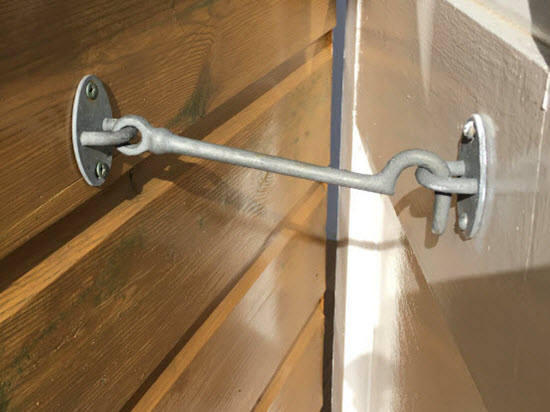 Cabin hook holding shed door open
Cabin hook holding shed door open
The reason the hook is fixed to the wall, is so that when the door is shut it doesn't dangle in the wind and blow against the paintwork.
The second is the kick down door stop
As its name suggests this is fitted at the base of the door and you can use your foot to change the position of the hinged door stop from facing up to facing down. When facing down the bottom of the door stop, which has a rubber shoe on, is in contact with the ground and 'digs in' so that the door can't close.
The third method is to use a metal door stay
These are a fabricated metal bar that are fixed to the top of the door at one end and to the door lintel at the other. The length of the bar limits the amount that the door can open, when the door is fully open the bar drops into a keep that holds the door open against the wind. When it is time to close the door you can pull on a cord that raised the bar out of the keep and swing the door shut.
In conclusion
Shed door latches are generally designed to keep your door closed, not to secure it against intruders. Shed security bars and shed door locks are the thing to use if that is what you are after.
The four types of shed door latches are (in terms of complexity):
- Turnbutton
- Sliding latch
- Rising latch
- Suffolk latch
All are available in both metal and wood.
As you have probably realised by now I am a bit of a fan of wooden shed latches and make a few each month. If you would like me to make you one drop me an email and I can send one out to you.

Looking for more information on how to get your shed door working perfectly?
Return from Shed Door Latch to the Shed Door Hardware hub page

Keep in touch with our monthly newsletter
Shed Building Monthly
